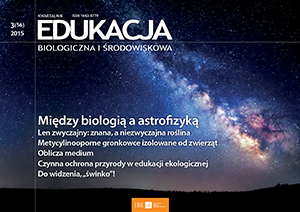Metycylinooporne gronkowce izolowane od zwierząt – potencjalne zagrożenie dla ludzi
Methicilin-resistant staphylococci isolated from animals – potential danger for humans
Author(s): Monika Drężek, Ida MałyszkoSubject(s): Energy and Environmental Studies, Health and medicine and law, Demography and human biology
Published by: Instytut Badań Edukacyjnych
Keywords: antibiotics; companion animals; livestock; methicilin; resistance; staphylococci;
Summary/Abstract: Staphylococcus sp. is a group of bacteria which belongs to the natural microflora of humans and animals, and mainly they live on skin and mucous membranes. However, common using of antimicrobial agents in the treatment of staphylococcal infections and in livestock animals, increases the number of antibiotics-resistant microorganisms and favors their existence in the environment. Emergence of resistance to methicillin in bacterial cells is the result of acquisition of the mecA and mecC genes which are a part of the larger structure called staphylococcal chromosome cassette (SCC). SCC can also carry other genes with are cause of resistance to various antimicrobial agents, as well as virulence genes and bacteria which are able to host cassette can gain new features. MRS associated with animals have limited ability to adapt to people colonization and to spread in human populations, however, they could possibly endanger the public health.
Journal: Edukacja Biologiczna i Środowiskowa
- Issue Year: 2015
- Issue No: 3
- Page Range: 39-47
- Page Count: 9
- Language: Polish
- Content File-PDF

